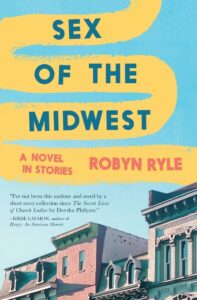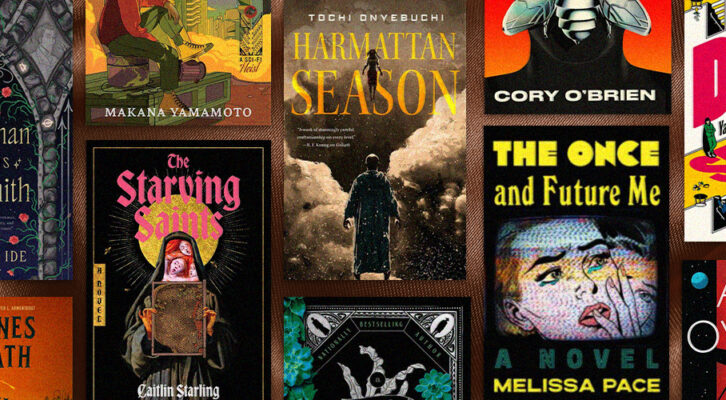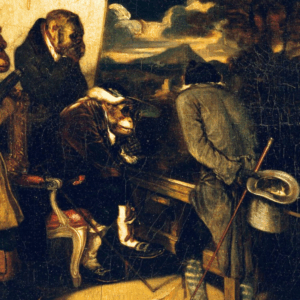
Is My Small Town the Center of the Universe?
Robyn Ryle on the Consistent Delight of a Familiar Face
Sometimes I tell people that Madison—the small town in southern Indiana where I live—is clearly the center of the universe. Mostly, I’m joking.
Everyone has had that experience of being halfway across the world and suddenly running into someone from home. If you live in New York City, that’s no big deal. Almost 8.5 million people are from New York. When you live in a town of about 12,000 people like I do, running into your neighbor while walking down the streets of Barcelona or Paris feels like a small miracle.
Once, I was sitting at a brewery by myself in a town on the far side of our state, texting a friend back in Madison. A guy sat down next to me and we struck up a conversation in which we discovered that the friend I’d been texting was, in fact, his college roommate.
There is something comforting about coming across a familiar face, especially when that face shows up in an unexpected setting.
“All roads lead back to Madison,” I said, or something like that. That feeling of suddenly being connected across the miles was as buzz-inducing as the beer.
There is something deeply satisfying about discovering the many ways in which we are connected to each other. There is something comforting about coming across a familiar face, especially when that face shows up in an unexpected setting.
In movies, we find delight in the surprise of the cameo appearance. In TV shows, it’s an old character reappearing episodes after they seemed to have disappeared for good. In a book series, it’s settling in once again with your favorite detective, sidekick, and cast of kooky characters.
In my novel-in-stories, Sex of the Midwest, the same characters reappear over and over again, sometimes doing nothing more than walking by in a crowded bar. Yet every time I wrote someone familiar into one of those scenes, I felt a little frisson of delight. I felt a vicarious thrill in creating the kind of world where people are constantly bumping into each other. It was fun to create a place where familiar faces abound.
The social life of small towns is just as if not more complicated than city neighborhoods or suburbs.
It wasn’t hard to imagine that world because that is the kind of place where I live. Sometimes I like to play a game and count how many familiar faces I see on an average day as I walk down our main street (which is literally called Main Street). On a day with a big event like the farmer’s market or music in the park, the number might go as high as fifty. On a normal day, it hovers around fifteen. Even on a cold or rainy day, if I stop by the library or the coffee shop, I’m bound to run into someone I know.
When I sat down to write my novel-in-stories, I had to figure out how to translate those experiences onto the page in a way that was both realistic and believable without lapsing into clichés. The social life of small towns is just as if not more complicated than city neighborhoods or suburbs. They’re full of groups that overlap as well as networks that have almost no points of intersection.
In Lanier, the small town where my book is set, there’s a large community of retirees. But within that group, there are retirees who are part of the pickleball crowd and those who aren’t. Some retirees are heavily involved in volunteer work, while others who grew up in the area might spend most of their time interacting only with family.
Against that backdrop, does everyone really know everyone else? Or are there some gaps in their knowledge, as when Nancy is amazed to find she didn’t know that Dr. Harvey is single? The gossip mill in a small town can be an effective source of information, but it sometimes works imperfectly to spread information. The challenge for me was to show how interconnected people can be while also being true to those complexities.
When several early readers said they wished they could move to Lanier, I knew I’d gotten something right.
Those challenges were well worth it for the reward of creating a book that is very much about my belief in the sustaining power of community and connection. As someone who grew up in a small town, I understand the contradiction of needing desperately to get away from the place you’re from and then immediately missing that feeling of being held and loved that small towns can bring.
The world is an increasingly scary place. When I think about how to survive the impending disaster of the day, my answer is always through community. At the last concert in my town before the pandemic closed the world down, someone stood on the stage and said, “In Madison, if we’re going down, we’re going down together.” It might not be enough to stave off the end of the world, but it’s some comfort when hard times come. Sex of the Midwest is a love letter to all the small towns that have nurtured and inspired me.
There’s a part of me that wishes everyone could experience the joy that is living in a place like Lanier, even for a moment. When several early readers said they wished they could move to Lanier, I knew I’d gotten something right. The appeal for readers is just that feeling—that at least for the length of the stories they might be able to pull up a chair in the Main Street Saloon or sit in the window of the coffee shop. For a couple of hours, they are also a part of Lanier, running into familiar faces around every corner.
Sometimes it feels like the small town where I live is the center of the universe. Maybe it is. Or, at least, maybe it’s the center of the universe in which I would like to live. Maybe it’s the center of the universe I’d like to invite readers into for a brief moment. I’d like to share with them a universe that acknowledges the ways in which we are all connected. A universe that celebrates the joys of the familiar face. Maybe a place where we understand that even the faces of strangers are ones that have just not become familiar yet.
__________________________________

Sex of the Midwest by Robyn Ryle is available from Galiot Press.
Robyn Ryle
Robyn Ryle is a writer of fiction and nonfiction. Her linked short story collection, Sex of the Midwest, received a Kirkus starred review and will be published in Fall 2025 with Galiot Press. She’s the author of two award-winning nonfiction books–She/He/They/Me and Throw Like a Girl, Cheer Like a Boy. She’s also written a young adult novel about a girls basketball team who challenges the boys to a game, Fair Game. Robyn is a full professor of sociology and gender studies at Hanover College. She has also written a sociology of gender textbook, Questioning Gender: A Sociological Exploration, in its 5th edition. She lives in Madison, Indiana, in a 200-year-old house with her husband and two aging cats.



















